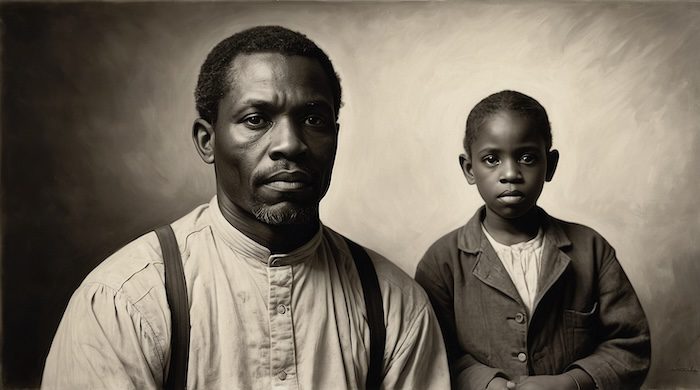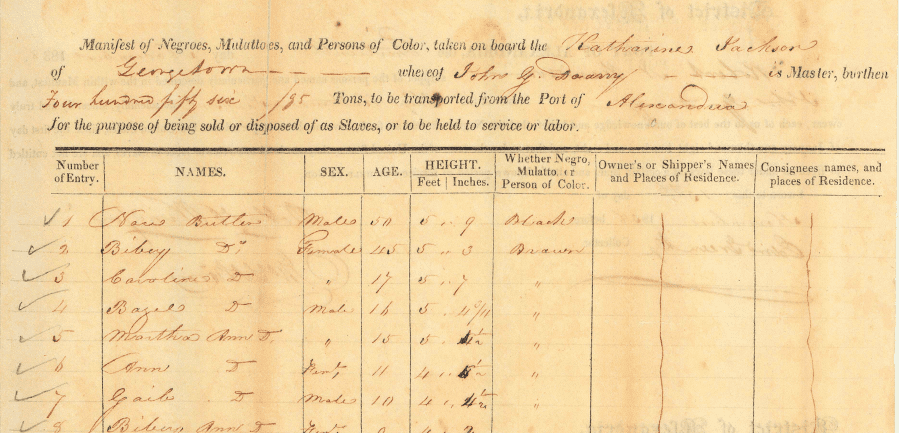
West Oak Plantation
🌿 West Oak Plantation (Iberville Parish, Louisiana)
The names listed here are connected to the enslaved families transported in the 1838 sale from Maryland to West Oak Plantation in Iberville Parish, Louisiana, owned by Dr. Jesse Batey. Their forced relocation marked a traumatic rupture in family and community life.
At present, no WikiTree profiles have been created for the individuals listed here. In the future, descendants and researchers will be able to add and link these names to family trees on WikiTree, ensuring their stories are preserved.
For additional documentation, visit the Georgetown Slavery Archive – West Oak Collection, which preserves original bills of sale and related records.
History of West Oak Plantation
West Oak was a 2,800-acre sugar plantation near Maringouin, Iberville Parish, Louisiana. It was owned by Dr. Jesse Batey (1796–1851), a physician and member of the Hibernian Society. Batey also held additional landholdings in Pointe Coupée and Fordoche, though it does not appear that he lived at West Oak itself.
In 1838, Batey purchased 64 enslaved people from the Jesuits of Maryland in the infamous sale of 272 individuals. They were transported from Alexandria, District of Columbia, to New Orleans aboard the Katherine Jackson on November 13, 1838.

Download Manifest of the Katherine Jackson
Understanding the “Classes”
The names below are divided into 1st Class, 2nd Class, and 3rd Class as they appeared in the original sale records connected to West Oak Plantation. These “classes” did not reflect family, kinship, or social identity. Instead, they represented the economic value enslavers and buyers assigned to human lives during large transactions.
This cruel system reduced people to property categories, splitting families apart across classes. A father might be listed as 1st Class, while his wife or children were placed in 2nd or 3rd Class. It shows how family bonds were ignored when Jesuit-enslaved people were transported from Maryland to Louisiana.
The classifications also highlight the brutal economics of sugar slavery. In Louisiana, sugar production was far deadlier than tobacco farming in Maryland. Men in “1st Class” were sent to endure long days in cane fields and boiling houses, while women and children in “2nd” and “3rd Class” still faced exhausting labor and frequent family separation.
1st Class
Included those enslaved men and women considered most “valuable” by buyers, often in their prime working years. They were expected to perform the heaviest labor, especially in Louisiana sugar fields and boiling houses.
- Basil Butler
- Tom Butler
- Collin Freelock
- Francis Hawkins
- Neally Hawkins
- Patrick Hawkins
- Bill Hill
- Joe Hill
- Polk Hill
- Louis Merric
- Ambrose Scott
- Alex Scott
- Nace Scott
- Peter Waters
- Washington Wilson
- George Wilson
- Richard Wilson
2nd Class
Often women of childbearing age (sometimes with children), older teenagers, and skilled workers. Their value was considered “moderate” in the market. Many were still forced into hard field labor, but they were priced differently than those in 1st Class because of age, family responsibilities, or skill type. Families were often separated across 1st and 2nd Class categories.
- Bill Alexander
- Agnes Butler
- Christina Butler
- Eliza Butler
- Mary Butler
- Delphia Gray
- Betsy Harris
- Ellen Harris
- Louisa Harris
- Biby Hawkins
- Jack Hawkins
- Martha Hawkins
- Susan Hawkins
- Sarah Ann Hill
- Jordan (Matthews?)
- Annie Scott
- Caroline Scott
- Jim Scott
- Lidiann Scott
- Lucy Ann Scott
- Luke Waters
- Eliza West
- Jane Wilson
3rd Class
Included the elderly, the very young, or individuals whom enslavers considered less “profitable.” These were sometimes children too young to work full days, or older adults who could no longer sustain heavy labor. Tragically, this classification still treated them as property to be sold, often apart from their families.
- Jim Broadman
- Emiline Butler
- Henny Butler
- Sarah Butler
- George Harris
- William Harris
- Amanda Hawkins
- Ellen Hawkins
- Letty Hawkins
- Matilda Hawkins
- Betsy Hill
- Tom [Merric?]
- Charlotte Pendleton
- Ben Scott
- Clara Scott
- Clara Scott
- Cumby Scott
- Fannie Scott
- Louisa Scott
- Mary Scott
- Rose Scott
- Adeline Waters
- Joe Waters
- Margaret Waters
- Miley Waters
- Charles Wilson
- Bridget
Restoring Dignity
The names listed here were once recorded only as property. By building WikiTree profiles and linking them to family histories, descendants and researchers are restoring their stories and ensuring they are never forgotten.
